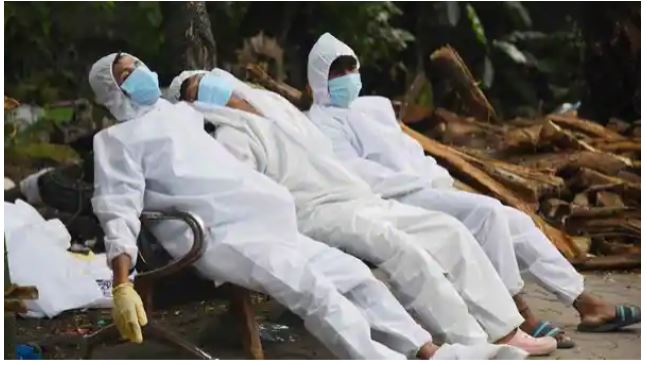The rise of COVID-19 cases with regards to the waves visibly seen varying from state to state in India. Amidst extended lockdowns to slow the transmission, Jammu state has seen the surge of the second wave. While, the cases in Kerala are now on the rise. The fear and anxiety with emergence of third wave of COVID-19 sweeping across Germany to Canada. Rise in Kerala Cases can be early signs of India being in Deep Waters again.
ASIAN’S NATION’S COVID-19 CASES ON RISE
Kerala has higher number of districts with positivity rate approximately 13.6%, half of the total caseloads in the country. Malappuram amongst other 13 districts is with 27,335 active cases contributing the most to the state’s active caseload. Moreover, the other Southern Nations, Indonesia’s positivity rate is close to that of India’s state of Kerala at 13.7%. According to seven days rolling average, there is a steep rise in Thailand, Vietnam, Malaysia. Thus, raising certain concerns and important questions.
COVID-19 appropriate behaviour concerns:
1 Regular health check-ups
2 Isolation of infected people to control the spread
3 Double masking
4 Widespread Public awareness
5 Social Distancing
6 Washing Hands Regularly
Internationally, the COVID-19 appropriate behaviour followed when the cases are on the rise. Amidst Virus spread, we also witnessed rally’s; protests held globally.
After warnings from the government banning mass gatherings on Eid al-Adha. Muslim populated country Indonesia seems to replace India as Asia’s COVID-19 hot spot. Bangladesh paused its lockdown and people went shopping and travelling the positivity rate was touching 29% from 3%. India’s North-eastern states Meghalaya, Assam, Tripura, Mizoram, and West Bengal bordering Bangladesh also highly affected by the virus spread. This sums up why appropriate behaviour should followed strictly. A need to understand why citizens tend to take emerging variants lightly and time to time reminders and strictness should follow.
Sluggish Vaccination process:
1. Kerala: 39.90% of the population vaccinated. 38 per cent of the adult population has received at least one dose of vaccine. Kerala Model known for excellence in public health is being questioned the COVID19 surge handling.
“The present circumstance is that we are facing an acute shortage of the jab. That is the truth” news agency PTI quoted the chief minister.
Majority of the population aged 18-44 has not received the vaccination. Thus, flags acute shortage of vaccine supply. Kerala health care is also fighting the Zika virus.
2. Indonesia’s vaccine rate with 1 dose is 15% fully vaccinated. Not fully 10% which tells us that the slow vaccination rate and the surge of Delta variant is a concern.
UN Secretary General argues ”there is lack of Global Solidarity”. Also adding that only 1.1% of low-income countries received the first dose of vaccine. Making it evidently clear a need to push for equitable access to vaccines.
PREVENTION IS BETTER THAN CURE
Apart from developing health infrastructures, providing vaccines as grants and supplies, the testing (RT-PCR) must increase to keep a check on the “R” Reproductive Rate. It’s the basic reproduction ratio or rate or the basic reproductive rate, is an epidemiologic metric to describe the contagiousness or transmissibility of infectious agents. Greater R level means that the disease will grow fast wherein R level lower than 1 will subsequently die out.
Further, Kerala’s R level is hovering around 1, which means one patient is affecting one other person at least currently. The R value in India is currently below 1. Hence, they need to sort to lockdowns to make sure transmissibility rates stay lower.
The R value of Covid in Indonesia has been between 1.2- 1.4 during second wave outbreak. Indonesia is strictly implementing PPKM level 4 alongside accessing its vaccination drive.
The Implementation:
The implementation of level 4 and level 3 PPKM (PUBLIC ACTIVITY RESTRICTION) assessed based on three main factors. Namely the indicator of transmission rate and the response of the health system based on the WHO guidelines. The third indicator is the socio-economic condition of the community,” Pandjaitan told a virtual press conference.
Vaccine development goes through several phases and years process before its ready to for public use. Government, Private Firms, Multilateral organisations- the agents involved in the making of the vaccine. International efforts like COVAX– A Vaccine pillar of the Access to COVID-19 Tools (ACT) Accelerator.
Dozens of vaccines approved for emergency usage globally. Apart from slow vaccine process demand due to vaccination myth’s, we comprehend that uneven rollout of vaccines is a concern. Not every country has the capacity to produce and supply vaccines. The lower income countries must be kept in mind while fighting the way out of this epidemic. The severity of diseases can be controlled with a strong and fast pace of vaccination process and delivery.
“The efforts like testing, social distancing, cough etiquette, isolation if facing any symptom, most importantly it has to be the awareness campaigns, hygiene” the World Health Organization (WHO) regional director strongly advices.





